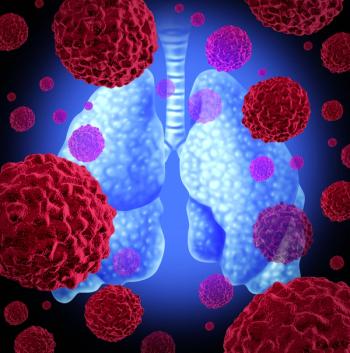
- ONCOLOGY Vol 10 No 5
- Volume 10
- Issue 5
Targeted Radiation Therapy Halts Low-Grade Lymphomas
Radiation therapy targeted at the cellular level can halt the advance of lymphoma while avoiding the major drawbacks of chemotherapy, according to a Stanford University study in the March 1996 issue of Clinical Cancer Research.
Radiation therapy targeted at the cellular level can halt theadvance of lymphoma while avoiding the major drawbacks of chemotherapy,according to a Stanford University study in the March 1996 issueof Clinical Cancer Research.
The Stanford team used radioimmunotherapy (RIT) with yttrium-90to treat 18 patients whose low- or medium-grade non-Hodgkin'slymphoma had relapsed after chemotherapy. The patients were notcandidates for conventional bone marrow transplants because ofthe extent of their disease.
The researchers observed significant tumor regression in 13 patientsand complete disappearance of the tumors in 6 of the 13. The primaryside effect of the treatment was temporarily decreased blood counts,but other side effects of chemotherapy, such as hair loss, weightloss, and nausea, were not observed. Freedom from disease progressionlasted for periods ranging from 3 months to more than 29 months.
"Our patients appreciated the mildness of this treatmentcompared with chemotherapy," said Dr. Susan Knox, an assistantprofessor of radiation oncology at Stanford and lead author ofthe paper. "Not only did it work better for most of the patientsthan their prior chemotherapy, but they felt well for the mostpart."
"Chemotherapy often can make people feel quite sick,"Knox said. "Our patients didn't feel sick. They continuedto work, ride horses, play golf and do their normal activities."
Chemotherapy performed on an outpatient basis is frequently thepreferred treatment for patients with lymphoma. Chemotherapy caneventually lose its effectiveness in low-grade lymphomas, however,which are more indolent than higher grades of lymphoma but oftenincurable, Knox said.
Radiation does kill the cancerous cells and can be targeted atthem using RIT. This form of radiation therapy delivers radiationdirectly to the cancer using monoclonal antibodies with attachedradioisotopes. The antibodies recognize and bind to targets oncancer cells. When they are injected into a patient's system,the antibodies help concentrate the therapeutic radiation in thecancerous area.
Currently, RIT with yttrium-90 is being evaluated as a treatmentalternative in cases where chemotherapy has failed. More studieswill be necessary, Knox said, to learn how best to use this newtherapy.
Knox is hopeful that RIT with yttrium-90-labeled antibodies willeventually be an outpatient treatment. Chemotherapy is administeredon either an outpatient or inpatient basis, depending on the particulardrugs used, she said.
The Stanford study was a phase I/II study to evaluate safety aswell as effectiveness of RIT with yttrium-90, Knox said. A multicenterphase II study is already in the works; it will provide a largersample for a true measure of treatment effectiveness. Eventually,in a phase III study, the targeted radiation therapy will be comparedwith chemotherapy.
"That really is the definitive test," Knox said. "Andthat will not happen for a while."
Coinvestigators on the Stanford team headed by Knox included Dr.Ronald Levy, professor of medicine and chief of the division ofoncology; Dr. Michael Goris, professor of radiology and nuclearmedicine; and Dr. Thomas Davis, medical oncology fellow.
Articles in this issue
over 29 years ago
The Molecular Basis of Cancerover 29 years ago
Colorectal Cancer Screening Is Cost-Effective, OTA Study Showsover 29 years ago
Swedish Study Supports Mammography Screening for Women Age 40 to 49over 29 years ago
Recall of Philip Morris Cigarettes, May 1995-March 1996over 29 years ago
Marital Arguments Lead to Weakened Immune System in Older Couplesover 29 years ago
Management of Radiation-Induced Brachial Plexus NeuropathyNewsletter
Stay up to date on recent advances in the multidisciplinary approach to cancer.
































































































